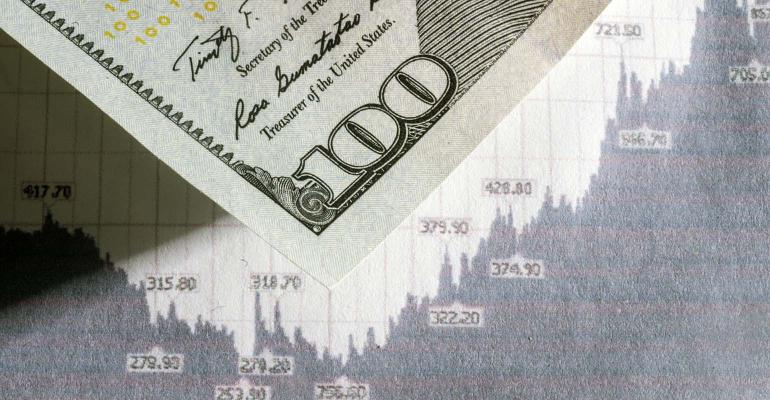(Bloomberg) -- Money-market funds — those humdrum cash-equivalents that plodded along for years in the low-interest rate era – have suddenly turned lucrative.
The funds are throwing off reams of cash, buoyed by a flight to safety following the regional banking crisis, the US Federal Reserve’s rate hikes and increased fees. About $369 billion net has flowed into money-funds since mid-March, and at the same time, money market funds stopped having to discount their fees to retain business.
That combination propelled industry revenues for March to a record $14.9 billion on an annualized basis, according to Crane Data. The annualized figure for March 2022 was $10.3 billion.
The current value of all money-market funds stands at $5.3 trillion, an increase of $800 billion from a year ago, according to data from the Investment Company Institute.
The good times could be a boon for asset managers, given that money-market funds charge higher fees than the stock and bond index funds that have attracted the most new cash in recent years. Experts predict the trend will last, as the Fed isn’t expected to slash interest rates back to near-zero anytime soon.
“Cash is no longer trash,” Michael Brown, an equity analyst at Keefe, Bruyette & Woods, said in a phone interview. Money-fund management is “an excellent business” right now, he added.
The biggest beneficiaries of the money-market renaissance include Fidelity Investments, BlackRock Inc., Federated Hermes Inc. and asset-management arms of Goldman Sachs Group Inc. and JPMorgan Chase & Co.
In first-quarter results reported Thursday, Federated Hermes said money-market assets hit a record of $505.8 billion, up from $476.8 billion at the end of last year. The Pittsburgh, Pennsylvania-based firm’s customers embraced money-market funds “as interest rates continued their rise and as investors considered regional banking issues,” CEO J. Christopher Donahue said in a statement.
BlackRock also gathered more than $40 billion net in cash-management inflows in March as regional banks faced a “crisis of confidence” from investors, CEO Larry Fink said during its earnings call earlier this month.
“We expect the shift from deposits to money market funds to be a longer-term trend,” Fink said. “Yields are back after a lost decade of near-zero rates.”
During the past decade, passively managed exchange-traded funds that track stock and bond indexes have dominated the battle for inflows — largely because of their bargain-basement fees. S&P 500 and Bloomberg Aggregate Bond index funds can charge less than 0.05%, while the Fidelity Series Total Market Index Fund — with about $53 billion in assets — charges nothing.
Money-market funds were also cheap until recently, as they had to waive or cut fees to ensure yields paid to investors didn’t slip below zero. That cost the industry $4.1 billion in waived fees last year and $8.4 billion in 2021, according to the Investment Company Institute.
This year has been a different story.
Active Management
The net expense ratio at money market funds, which reflects management fees and other costs, averaged .23% or 23 basis points as of April — well above many index ETFs. It’s still not entirely clear how much profit money-market funds generate because they’re more actively managed than low- or no-fee index funds.
Aside from fees, money-market funds offer another advantage for asset managers: They can ensure clients don’t move cash to rivals.
At Charles Schwab Corp. money market funds have partially offset withdrawals at the firm’s banking arm.
While the bank’s deposits shrank by about $116 billion during the nine months ended March 31, more cash has flowed into the firm’s money market funds during that period. Schwab’s money-market assets more than doubled to $357.8 billion from $159.2 billion over the same nine months.
With yields now exceeding 4.5%, or 450 basis points, investors likely don’t care whether a money-market fund charges a fee of 10 basis points or 40 basis points, according to Peter Crane, founder of Crane Data. Asset managers also have to put more work into handling money-market funds than index funds, he added.
“Even the most actively managed bond fund is only buying a couple of things a day,” Crane said. Money market funds have “flows coming in and out every minute.”
--With assistance from Steve Dickson.





